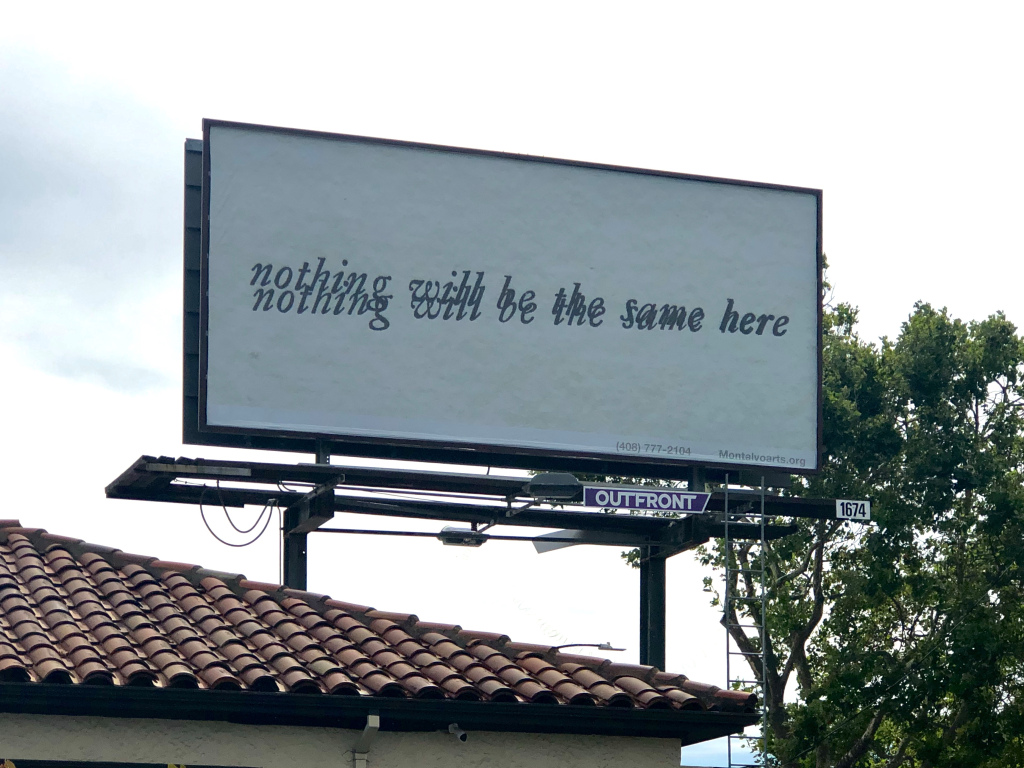The community has spoken — and it appears they have swayed San Jose leaders.
Faced with overwhelming opposition from residents across the city, San Jose officials are quickly pumping the brakes on a years-in-the-making plan to allow about 75 new digital billboards on private properties along freeways, as well as some smaller signs on private buildings and public land in the city’s downtown core.
In a surprising reversal, Councilmember Raul Peralez, who for years has been the most vocal proponent of the plan to construct new digital signs in San Jose, on Tuesday called for the city to “completely halt” the proposal and remove it from the city’s list of priorities — a distinction it had been given for the past four years in a row.
The full city council is expected to discuss Peralez’s proposal and decide whether or not to drop the billboard plan during a meeting Thursday afternoon.
In a memo released Tuesday afternoon, Peralez said that his original intent behind allowing new digital signs was to “generate new revenues and improve the quality of life for some of our poorest neighborhoods who live with the status quo of blighted paper billboards.” But in light of the coronavirus pandemic and in response to community feedback, he said he now believes there are bigger and more pressing matters that deserve the city’s attention instead.
“At this time, we should move on and truly focus on the herculean task of recovery for our city,” he said in the memo.
A citywide ban on new billboards has been in place for more than 35 years. Proponents of the ban have long argued that billboards create visual blight, distract drivers and negatively affect the environment and surrounding wildlife.
But billboard industry executives and lobbyists have spent the past half-decade pushing San Jose to overturn the ban, arguing that new digital signs could help energize the city.
Peralez and his team, in particular, have been in regular communication with billboard industry representatives during that time, according to email records obtained by this news organization. In some instances, staff in Peralez’s office have even taken input from industry lobbyists to craft the language behind his billboard proposals, records show.
The unveiling of the councilmember’s new stance — outlined in the Tuesday memo — comes just a day after the community grassroots organization No Digital Billboards in San Jose submitted a petition to city leaders with more than 600 signatures in opposition of the proposal.
The city’s planning department also released an online survey last week seeking input from residents on the billboard proposal. As of Tuesday, at least 80% of respondents had answered that they were “strongly opposed” to allowing new digital billboards to be built along the city’s freeways, according to the city.
John Miller, one of the leaders behind the No Digital Billboards San Jose group, called the latest developments “gratifying.”
“We always felt that the vast majority of residents in San Jose would object to this if they knew more about it, and I think we’ve been proven correct in that notion,” Miller said.
Updating the city’s sign ordinance and in turn, dismantling a decades-long ban on new billboards, was divided years ago by the city council into two phases.
In September 2018, the council completed phase one of the update when it voted 9-2 to allow digital signs on 17 city-owned sites that could accommodate up to 22 signs. The measure passed with almost no input from the residents due to what they say was inadequate community outreach by the city.
But more than two years later, the contracts for companies to erect those signs have yet to be awarded after sign companies protested certain city provisions, along with delays caused by the pandemic.
Peralez is recommending that the city move forward with plans to award the first phase contracts in the coming months and leave that work “unaltered,” but proponents of the city’s billboard ban also want to fight this from taking effect.
Under the proposed phase two amendments, which Peralez is now asking to be shelved immediately, San Jose would allow private property owners to erect free-standing billboard structures on approximately 75 freeway-facing sites in addition to an undisclosed number of digital signs on privately-owned downtown buildings and on structures in the public right-of-way, such as light poles and public restroom facilities.
The phase two proposal mandates that billboard companies seeking to erect a sign on a freeway-facing site must take down at least four dilapidated, paper billboards, though there is no removal requirement for the building-mounted signs downtown.
Unlike the first phase, where San Jose will earn some advertising revenue from the signs on public buildings, the city would reap little to no profits from the second part of the plan.
The San Jose City Council was scheduled to discuss the proposal during a Thursday meeting on the city’s top priorities for the upcoming year — also referred to as the City Roadmap — but Deputy City Manager Kip Harkness wrote in a memo on Monday that the matter would no longer be appearing on the agenda.
“For the purposes of the City Roadmap, this electronic billboard policy work is anticipated to be substantially complete by the end of fiscal year 2020-2021, and therefore does not need to appear on the Draft Roadmap for fiscal year 2021-2022,” he wrote.
Despite the anticipated summer completion date, Peralez said he wants to shelf the plan in its entirety before any more work was done on it. He still plans to ask the rest of the council to support his plan at Thursday’s meeting.
Mayor Sam Liccardo, who has wanted to retain the billboard ban since the beginning and voted against phase one of the plan in 2018, wrote in his own memo submitted before Peralez’s on Tuesday that the city needed to understand the impacts of phase one before moving onto the second part of the proposal.
“At best eyesores, and at worst, a dangerous distraction to motorists, I’ve characterized such signage as a giveaway to the advertising industry, without any clear public benefit to the community or taxpayers,” he wrote. “… We shouldn’t be surprised that residents have begun a drumbeat of vocal opposition, joined by environmental and other non-profit organizations.”










